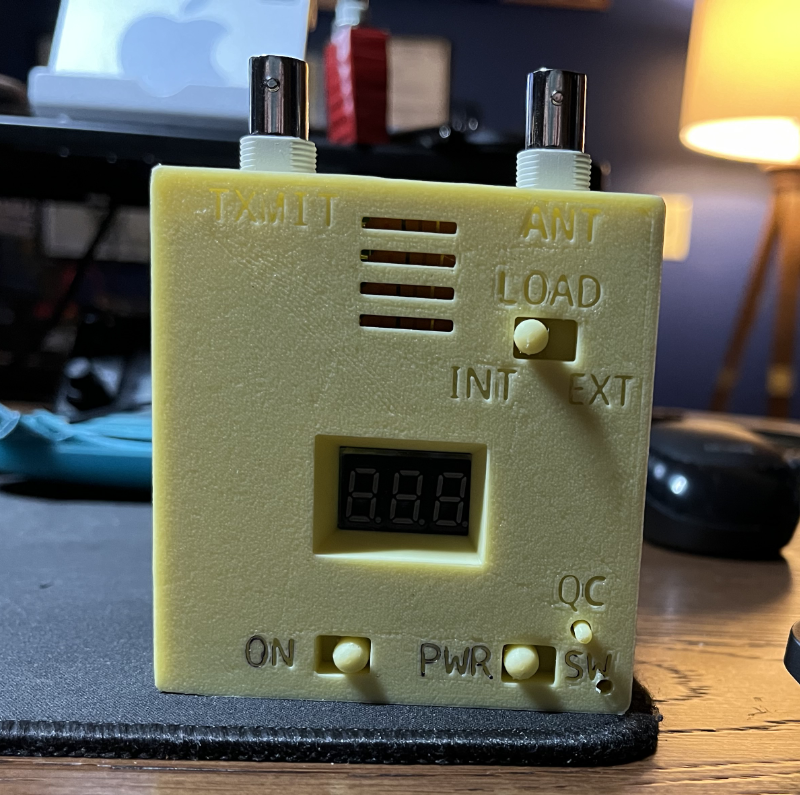One of the first ham radio specific kits that I built was a dummy load from QRP Guys. I keep it on my desk. It’s two PCBs with a shedload of resistors sandwiched between. It is simple. It is brutally effective. And the other day, it was invisible. I have no idea how it wound up in the drawer that it did, but I was absolutely unable to locate it for about two weeks. This is more than just a case of “It’s behind the milk”. This was almost nefarious.
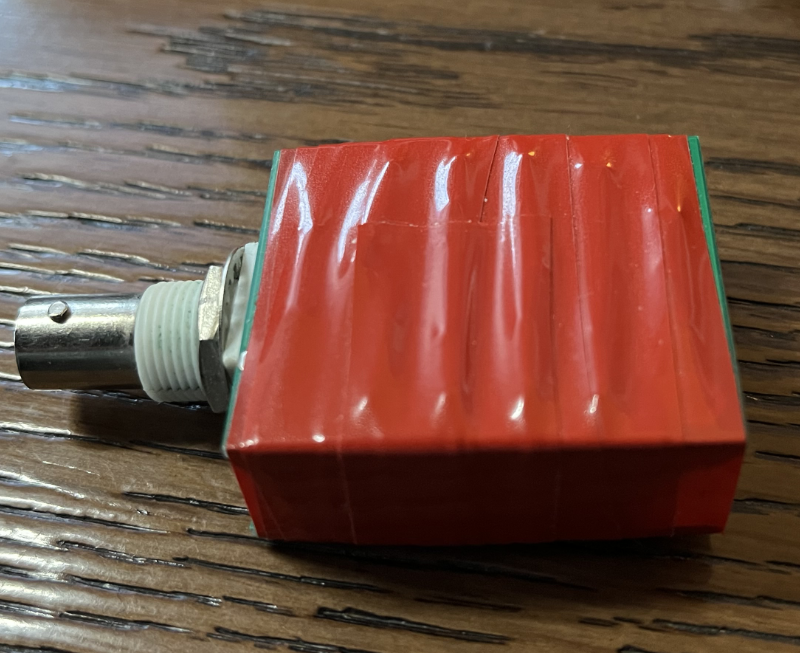
Yeah. I was trying to organize my office and hid it from myself.
The quick lesson was that I use my dummy load a lot more than I realized. I keep it on the desk so I can slap onto a rig if I want to apply power and play with settings or do much of anything that might inadvertently trigger a TX.
With my trusty dummy load missing, I did the only thing that made sense: I ordered another. But this time, I went with the Digital Power/SWR Meter with Dummy Load Kit from QRP Guys. It was a great experience with the first one, why not go back for more?
The kit arrived and I put it on my bench to assemble in the coming week. I then went into my office, opened a drawer to grab some electrical tape and there was my original dummy load.
Nice.
Well, with the kit in hand, there was work to be done. Given that the weather in NE Ohio can be pretty awful this time of year (I find that radio gear is more amenable to snow than misty, cold, intermittent rain) I decided to go to the bench and get it together. The process was swift. As with all of the kits of their’s which I have assembled, this one was well documented and easy to assemble. It did involve winding a transformer (not my favorite passtime given I have rather large hands) but it was painless.
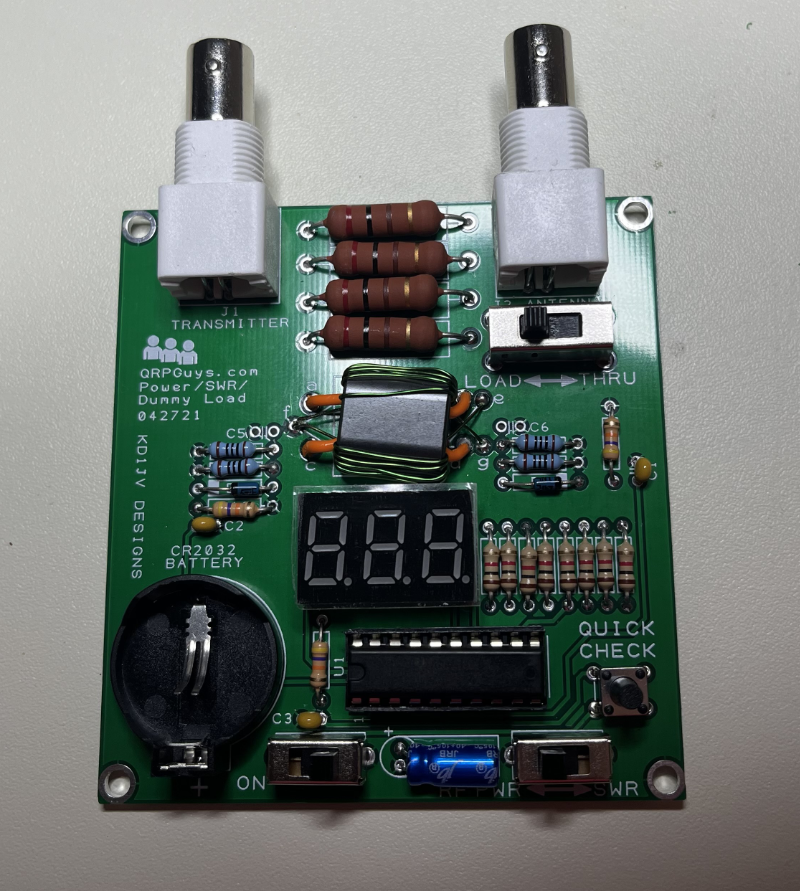
The kit even powered up the first time!
This was my first kit project where I got to use my 3d printer to make an enclosure. There is a link to the various design files on their site and the model is perfect. My Anycubic Vyper took about 10 hours or so to print the top and bottom in one go. I chose a rather strange lemon yellow color for the case so that it will be easy to locate. Nothing else I own is that weird color. With sliders and a button printed, the case went together pretty smoothly.
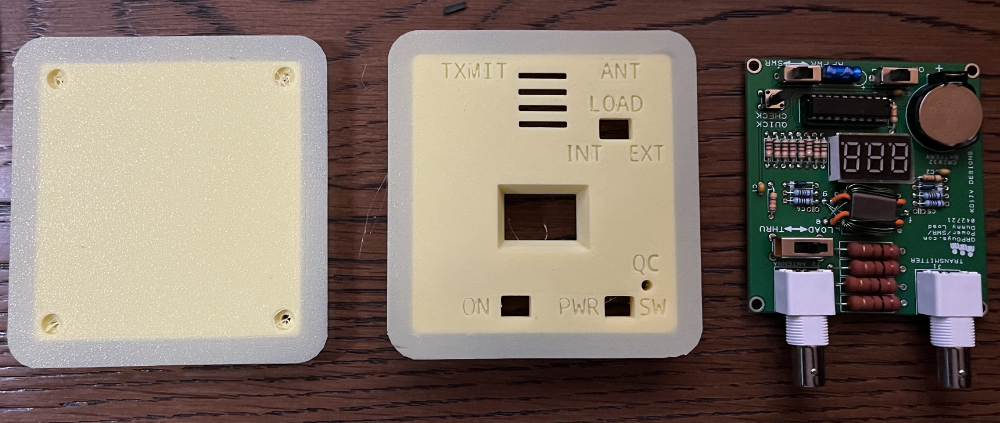
And now I have a second dummy load that can also do double duty as a Power/SWR meter in the field (or on the bench).
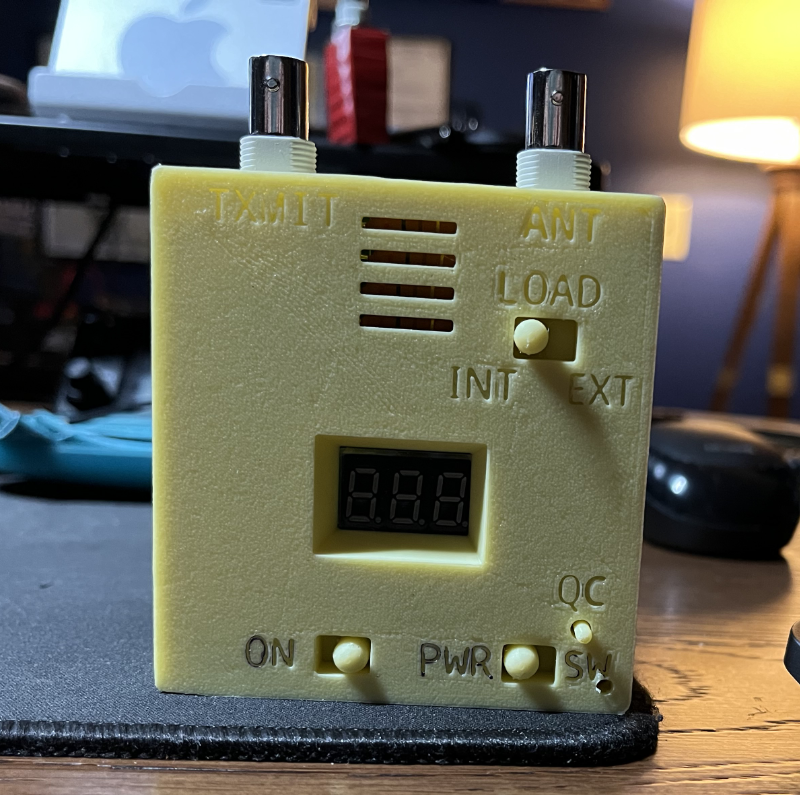
It’s a great kit and I’m glad I got it. I’ve already used the dummy load feature a number of times and the Power/SWR meter works well. Look, it’s not an oscilloscope, but it is a Good Enough meter from a kit and does the job at QRP levels. I recommend it.
![]()
